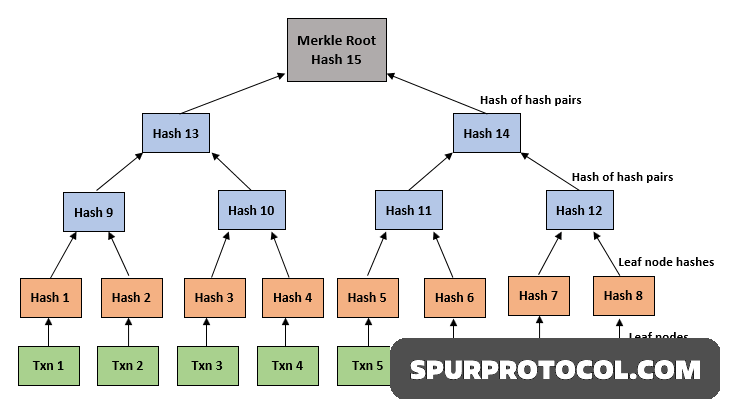What Is Merkle Tree?
This is a way of organizing and structuring large amounts of data to make it more straight forward to process a hash-based data structure.
Go Back

🕒 2:15 PM
📅 May 16, 2025
✍️ By Ecojames
What Is a Merkle Tree?
A Merkle tree is a data encryption structure used in data management applications where data is sent through a hashing algorithm in different ways to create a hash that represents all of the data in a file.
How does a Merkle tree work in blockchain?
- Merkle trees use a cryptographic hash function’s determinacy and reliability to summarize every transaction by constantly combining transfer info and creating new hashes until they reach the Merkle root.
- In this bottom-up system, blockchains first create hashes for each separate transaction (i.e., Merkle leaves).
- Then, these trees combine leaf values to create hashes for Merkle branches and continue this Merkle hashing process until they reach one hash value for every transaction in the block (i.e., the Merkle root).
Structure of a Merkle Tree
1. Leaf Nodes
The lowest level of the tree consists of the hash values of the individual data blocks (or transactions).
2. Non-Leaf Nodes
Each non-leaf node is a hash of its child nodes. Specifically, a non-leaf node is created by hashing the concatenation of the hashes of its two child nodes.
3. Root Node
The topmost node of the tree is called the Merkle root. It represents a single hash that encapsulates the entire dataset.
Why Merkle Trees are Important For Blockchain?
1. They allow for efficient data verification without needing the entire dataset.
2. They enhance security by making it easy to detect any changes to the data.
3. They support scalability by enabling lightweight clients to operate effectively.
4. They simplify the process of auditing and validating transactions.
5. They contribute to the overall robustness of the blockchain architecture.

